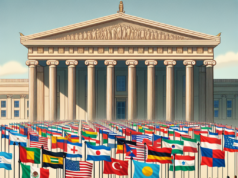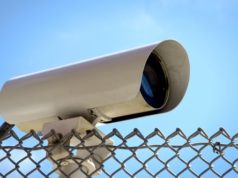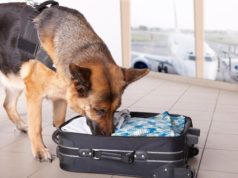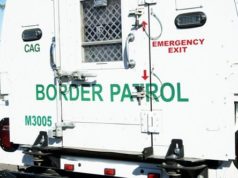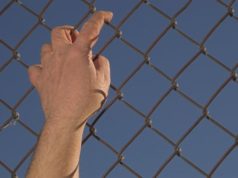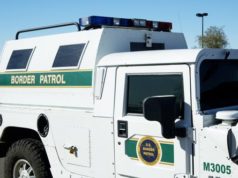
The Newest Strategy of Border Patrol: A Comprehensive Overview
The border between the United States and Mexico has historically been a contentious issue. In recent years, the debate over border security has taken on new significance, with immigration being a significant theme in national elections. Across administrations, the border patrol has implemented new strategies to keep the border safe for everyone involved. In this article, we will discuss the newest strategy of border patrol in detail.
Introduction to the Border Patrol
Border patrol is a law enforcement agency of the United States responsible for securing the country’s land borders with Canada and Mexico. The agency is part of the U.S. Customs and Border Protection (CBP). Border patrol officers perform their duties 24/7, which include detecting and preventing the illegal entry of individuals and contraband into the United States.
Over the years, the methods and tactics border patrol has used to secure the borders have evolved, but the job remains challenging and dangerous. Border patrol officers often work amidst harsh conditions, covering a vast area of land and water.
Historical Perspective
The first formalized border patrol officers were established in 1924 to prevent the illegal entry of alcohol and other illegal products from Mexico. The official Customs and Border Protection agency was created in 2003 under the U.S Department of Homeland Security. Since then, border patrol officers have faced an ever-evolving mix of security concerns, as well as political pressure from both sides of the political spectrum.
The Newest Border Patrol Strategy
The newest border patrol strategy takes into account advanced technologies and combines them with enforcement strategies. The overarching goal is to target transnational criminal organizations that indulge in smuggling human beings and hard drugs. Here are some of the key components of the newest border patrol strategy:
Enhanced Border Surveillance
The newest strategy of border patrol places greater emphasis on surveillance using state-of-the-art technology, such as drones, infrared cameras, ground sensors, and advanced radar. The more massive porous borders are now heavily surveilled using drones to smoke out criminal organizations smuggling humans and drugs.
The partnership between U.S Border Patrol and the Department of Defense has led to more technology being incorporated into border surveillance. Low-level aircraft with sensor cameras help spot potential threats before they reach the border.
Better Infrastructure
Border patrol is renewing its infrastructure with better border walls and fences. The walls and fencing are designed to meet current standards using durable materials resistant to wear and tear.
A significant renovation of infrastructure began in 2019. American barrier solutions initially started working on the project, but in 2021 the Department of Homeland Security decided to continue the work themselves. The aim was to strengthen the borders and reduce costs.
Expansion of personnel
Border patrol is trying to add more people to speed up procedures at the border crossing and take on post-adjudication tasks. In August 2021, the recruitment of 2,000 new border patrol agents began; this is in addition to a recently approved pay raise for current border patrol agents.
The new border patrol agents will be distributed throughout the southwestern border states. The hope is to reduce the number of inadequacies in the current regime while increasing productivity at ports of entry.
Reduction of Radiation Alarms at Border Crossings
Radiation alarms have been of concern at border crossings as they can easily detect radioactive material. However, there has been an upsurge of radiation alarms emanating from natural radiation sources such as soil and stones. The current administration is committed to reducing radiation alarm rates at border crossings to reduce the backlog of crossings.
More Advanced Detection Devices
Advanced technology systems for capturing and analyzing data have been implemented to help track the movement of smugglers across borders. These systems efficiently detect contraband and traffic offenders.
K9 Units
Border patrol has introduced more K9 units to detect contraband and any illicit drugs entering the border through vehicles. The K9s are specially trained to detect specific banned items and can do it relatively quickly, which enables the border patrol to move on to the next car.
Deployment of Tactical Infrastructure
Border patrol targets strategic and high traffic areas in border crossing zones for construction of the tactical infrastructure. Tactical infrastructure helps contain the discharge of traffic and allows for proper separation of local traffic from international traffic.
Easing the Burden of Processing Asylum Seekers
Asylum seekers were earlier subjected to a rigorous task of processing before granted access to the United States. However, the new administration has eased this burden by introducing extended hours for asylum seekers’ processing. The extended hours are designed to help make the processing of asylum seekers more efficient and faster.
Creation of a Crisis Intervention Unit
A Crisis Intervention Unit is being introduced to deescalate situations before they get out of hand. The unit comprises professionals who are specially trained to communicate with people under stress and to help de-escalate situations.
Effectiveness of the New Border Patrol Strategy
The effectiveness of the new sophisticated border patrol strategy is being felt in the high arrest records in the year 2021, mostly of people involved in human smuggling and distribution of illegal drugs. Operation Sentinel was launched to prevent human smuggling networks by targeting the leaders involved and offering better ways of identifying smugglers.
The enforcement strategies, coupled with the deployment of latest technology, are also reducing smuggling results. Troops on the ground interact with migrants more for diversions than to control them. Advanced tech and better enforcement strategies reduce the actual crossing of people and resources illegally.
Conclusion
The newest strategy of border patrol reflects the integration of advanced technology, structural improvements, and more personnel. The efforts of these strategies are already bearing fruit, with reduced incidences of human smuggling and distribution of illegal drugs.
As border patrol continues to leverage recent advances in technology to make the borders safer, the newest strategy provides more effective protection across the southern borders.
The United States border patrol has been considered to be a failure by many individuals in the American public due to the fact that hundreds of thousands of new illegal immigrants manage to come to America every year, mostly by way of Mexico by illegally crossing the border .
Part of this reform included a plan to remove all of the arrested illegal immigrants from every country except for Mexico. Most importantly, a program was to be put in place that allowed an illegal immigrant to become a temporary worker for six years.
Other aspects of the plan included increasing the amount of people involved with the United States border patrol. By increasing the number of workers, the Department of Homeland Security was hoping for a stronger level of enforcement. This change by the border patrol customs would be accompanied by more funding for technology to be used in the task forces.
Former President George W. Bush allowed for extra funds for many additional border patrol agents, as well as new immigration enforcement agents, deportation officers and detention centers with a greater capacity. There would also be a proposed increase in border control agents for the United States border patrol. Akin to many plans for immigration reform from the border patrol customs, Bush’s plan was criticized by two very different groups: supporters of stricter border controls and supporters of immigrant rights.
During Bush’s time as president, he brought many immigration issues to the table for discussion. In 2004, he discussed the idea of immigration reform plans with Mexico’s President Vicente Fox. However, the plan, informally known as the guest worker program, wasn’t officially discussed until 2005. Four to six million illegal Mexican immigrants would have been given temporary worker status, but Congress vetoed the idea.

